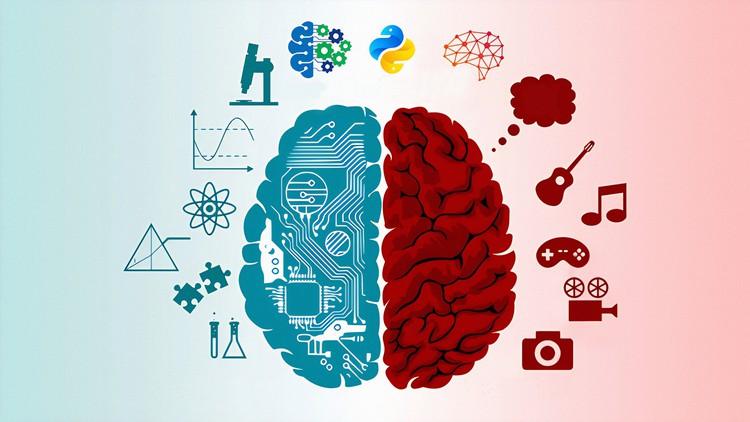
20 practical projects of Machine Learning and Deep Learning and their implementation in Python along with all the codes
Why take this course?
🎓 Course Title: Machine Learning and Deep Learning Projects in Python
🚀 Headline: Dive into 20 Practical Projects of Machine Learning and Deep Learning with Full Code Implementations in Python!
Course Description:
Machine learning (ML) and deep learning (DL) are at the forefront of innovation, driving breakthroughs across various sectors. This comprehensive course is designed for learners who have a foundational understanding of ML and DL concepts and are ready to apply their knowledge to solve real-world problems. 🌟
What You’ll Learn:
- Real-World Applications: Translate theoretical ML/DL concepts into practical projects that solve real-world challenges.
- Python Mastery: Enhance your Python programming skills while implementing machine learning models.
- Hands-On Projects: Engage with more than 20 hands-on projects, each designed to deepen your understanding of ML and DL through practical application.
Key Features of the Course:
- Essential Algorithms: Get familiar with key ML algorithms like Logistic Regression, Multinomial Naive Bayes, Gaussian Naive Bayes, SGDClassifier, and more.
- Model Architectures: Explore various DL model architectures, focusing on artificial neural networks.
- Data Handling: Master data preparation, preprocessing, visualization, and analysis to extract meaningful insights.
- Validation Metrics: Learn to use metrics effectively to evaluate the performance of your models.
- Prediction Methods: Discover different prediction techniques and apply them to enhance model accuracy.
- Image Processing: Gain skills in processing and analyzing images, a critical component in many ML/DL applications.
- Statistical Analysis: Understand the statistical aspects of data analysis to make well-informed decisions based on data.
Course Benefits:
- Interactive Learning: Engage with interactive content that makes learning more effective and enjoyable.
- Real Datasets: Work with real datasets from various industries to get a taste of real-world ML/DL applications.
- Complete Code Implementations: Access all the code required to implement the projects, written in Python, one of the most popular and versatile programming languages for ML and DL.
- Cheat Sheets: Receive over 40 comprehensive cheat sheets that cover essential concepts in data science, ML, DL, and Python to aid your learning journey.
Who is this course for?
- Data Scientists
- ML/DL Enthusiasts
- Software Engineers
- Students and Academicians
- Anyone curious about applying ML and DL in practical settings using Python
Why Take This Course?
By the end of this course, you’ll have a solid understanding of how to apply ML and DL algorithms to real-world problems using Python. You’ll be equipped with the tools and knowledge necessary to become an expert in your field and stay ahead in the rapidly evolving world of data science and artificial intelligence.
👨💻 Get ready to transform data into actionable insights with Machine Learning and Deep Learning Projects in Python! 🚀
- Dive into the practical application of Machine Learning (ML) and Deep Learning (DL) through a series of 20 hands-on projects designed for rapid skill acquisition.
- Gain a profound understanding of the end-to-end project lifecycle, from initial problem conceptualization and data preprocessing to model deployment and evaluation.
- Master the art of data wrangling and feature engineering, essential steps that significantly impact the performance of ML/DL models.
- Explore a diverse range of ML algorithms, including supervised learning (e.g., regression, classification) and unsupervised learning (e.g., clustering, dimensionality reduction).
- Develop expertise in building and optimizing various neural network architectures, from foundational feedforward networks to more advanced convolutional and recurrent networks.
- Learn to leverage popular Python libraries such as Scikit-learn, TensorFlow, Keras, and PyTorch, becoming proficient in industry-standard tools.
- Implement projects across various domains, such as natural language processing (NLP) for text analysis and sentiment classification, and computer vision for image recognition and object detection.
- Understand the principles of model selection and hyperparameter tuning to achieve optimal results for each specific project task.
- Develop the ability to interpret model outputs and diagnose potential issues, fostering a critical approach to ML/DL implementation.
- Build a comprehensive portfolio of working code examples that showcase your practical ML and DL capabilities.
- Acquire skills in creating interpretable models, understanding the ‘why’ behind predictions for better decision-making.
- Gain experience in data visualization techniques to effectively communicate insights derived from ML/DL models.
- Learn to build predictive models for real-world scenarios, such as forecasting time-series data or predicting customer behavior.
- Understand the fundamentals of deep learning frameworks and how to effectively utilize their capabilities for complex tasks.
- Practice code optimization to improve the efficiency and scalability of your ML/DL solutions.
- Explore projects that address challenges in areas like recommendation systems and anomaly detection.
- Develop the confidence to tackle new ML/DL problems by understanding the underlying methodologies and their practical application.
- PROS:
- Highly practical focus with immediate application of learned concepts.
- Comprehensive coverage of essential ML and DL techniques through diverse projects.
- Provides ready-to-use code, accelerating the learning and experimentation process.
- Builds a strong foundation for tackling more complex, custom ML/DL challenges.
- CONS:
- May require prior foundational knowledge in Python programming and basic mathematics (calculus, linear algebra, probability) for maximum benefit.